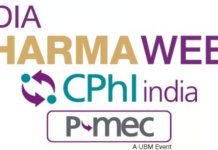Kolkata November9,2013: Dr.H.R.Keshavamurthy Director (M&C),Press information Bureau, Kolkata
Diabetes mellitus, or simply diabetes, is a metabolic disorder in which a person has high blood sugar, either because the pancreas gland does not produce enough insulin, or body cells do not respond to the insulin that is produced. Resulting high blood sugar produces the classical symptoms of polyuria (frequent urination), polydipsia (thirst) and polyphagia (increased hunger).
There are three main types of diabetes mellitus (DM):
- Type 1 DM results from the body’s failure to produce insulin and was previously called to as “insulin-dependent diabetes mellitus” (IDDM) or “juvenile diabetes”.
- Type 2 DM results from insulin resistance, a condition in which cells fail to use insulin properly. This was previously referred to as non insulin-dependent diabetes mellitus (NIDDM) or “adult-onset diabetes”.
- The third main form, gestational diabetes, occurs when pregnant women develops suddenly a high blood glucose level.
However, noninsulin-dependent diabetes is much more common. This form of diabetes occurs principally in adults and results from the body’s inability to respond properly to the action of insulin. Malnutrition-related diabetes has also been described from some developing countries, like India.
As diabetes is a chronic disease and need lifelong treatment becomes an economic burden on patients and family. The most important aspect of diabetes is occurrence of complications that increases the cost of management. Heart disease in diabetes is 21.4%, neuropathy 17.5%, peripheral vascular disease leading to ulcers 6.3%-30%, Retinopathy (eye) 19.0%, and Micro albumina (kidney)26.3%.
National Diabetes Month, observed each year in November, is a time for communities across the country – and the world – to renew and reinforce their fight against diabetes and encourage action to change the life style to reduce its impact. November 14thwhichmarks the birthday of Frederick Banting, who, along with Charles Best, discovered insulin, is celebrated as World Diabetic Day.
Diabetes is part of a larger global epidemic of non- communicable diseases. This disease affects 6.6% (285 million people) of the world’s population in the 20-79 years age group. According to the International Diabetic Federation (IDF), this number is expected to grow to 380 million by 2025. The IDF findings reveal that in 2007, countries with the largest numbers of people with diabetes are India (40.9 million), followed by China (39.8 million), the United States (19.2 million), Russia (9.6 million) and Germany (7.4 million).
India is home to 40.9 million people with diabetes – nearly 15% of the global diabetes burden and is projected to increase to 70 million by 2025. Impaired Glucose Tolerance (IGT) is also a serious problem in India. It has been noticed that with every diagnosed case of diabetes there is at least one undiagnosed case of glucose intolerance. So the actual population at risk would be much greater than our current estimate.
Type-2 diabetes is far more common than type-1 and results from a genetic predisposition and from lifestyle factors characterised by a high calorie intake and little exercise. The age of onset in India has been shifting towards younger people. Among Indians in their late teens, ‘adult-onset’ diabetes already manifests itself more often than ‘juvenile onset’ diabetes does. The reasons are the same as those behind the diabetes epidemic worldwide. One set of factors is urbanisation, a rise in living standards and the spread of calorie-rich, fatty, fast foods cheaply available in cities to rich and poor alike. Another is the increased sedentariness that has resulted from the replacement of manual labour by service jobs, and from the advent of video games, television and computers that keep people seated lethargically watching screens for hours every day.
Although poor Indians are currently at lower risk than affluent Indians, the rapid spread of fast food exposes even urban Indian slum dwellers to the risk of diabetes. In India, diabetes is no longer a disease of the affluent or a rich man’s disease. It is becoming a problem even among the middle income and poorer sections of the society. Indians have biological susceptibilities to diabetes because of a lower body mass index (BMI); Higher percentage of body fat that is concentrated in the abdominal area; Programmed during pregnancy as Low-birth weight infants are more susceptible than those of normal birth weight to obesity and diabetes and Insulin resistance; Excessive insulin resistance has been observed in Asian Indians as a predominant mechanism leading to Type 2 diabetes.
This alarming scenario led the Government to start the National Diabetes Control Programme on pilot basis during the seventh five year plan in 1987 in some districts of Tamil Nadu, Jammu & Kashmir and Karnataka, but due to paucity of funds in subsequent years this programme could not be expanded further in remaining states. However to contain the increasing burden of Non-Communicable Diseases, Ministry of Health and Family Welfare, launched the National Programme on Prevention and Control of Diabetes, Cardiovascular diseases and Stroke (NPDCS) on 8th January 2008 with the following objectives:
- Prevention and control of NCDs.
- Awareness generation on lifestyle changes.
- Early detection of NCDs.
- Capacity building of health systems to tackle NCDs.
A pilot project was launched in ten districts in ten states focused on health promotion and health education advocacy at various settings. In July, 2010,the Cabinet Committee on Economic Affairs approved the National Programme for Prevention and Control of Cancer, Diabetes, Cardiovascular Diseases and Stroke (NPCDCS) for implementation of its various components during the remaining period of 11th Five year plan (i.e. 2010-11 & 2011-12) at an estimated outlay of Rs. 1230.90 crore (Rs.499.38 crore for interventions on diabetes and cardiovascular diseases & stroke and Rs.731.52 crore for cancer control) on a cost sharing basis between the Centre and the States at the rate of 80:20. The programme is for implementation in 20,000 Sub-Centres and 700 Community Health Centres (CHCs) in 100 Districts across 15 States/UTs by promoting healthy lifestyle through massive health education and mass media efforts at country level, opportunistic screening of persons above the age of 30 years, establishment of Non Communicable Disease (NCD) clinics at CHC and district level, development of trained manpower and strengthening of tertiary level health facilities. It is expected to screen 30 years and above for diabetes and hypertension, early diagnosis of NCDs and treatment at early stages.
With the successful implementation of the programme, it is expected to achieve behaviour change in the community to adopt healthy life styles including dietary patterns, enhanced physical activity and reduced intake of tobacco and alcohol resulting in overall reduction in the risk factors of common NCDs in the community. It is envisaged to cover remaining districts during 11th plan period. Till end of 2012, 29000 Glucometers, 5.8 crore Glucostrips and 6.67 Lancets have been supplied to 21 States for Diabetes screening under NPCDCS, Urban Health Check-up (four cities) and Pilot Phase of School Health Programme (four Districts).1,32,59,143 persons have been screened for Diabetes and Hypertension.
To conclude, considering the ever-increasing burden of diabetes, health system has to be strengthened with standard care at all levels. The Government has taken certain initiatives at national level which is appreciable but there is a need to implement them at grass route level in focussed manner before it takes the shape of pandemic in India. Awareness about the causes and easy way of preventions are the key to success. CCI Newswire
























